How to Start a Successful Forestry and Arboriculture Career
- July 26, 2024
- 0 comment
Embarking on a career in forestry and arboriculture is not just about securing a job; it’s about nurturing a passion for the environment and making a tangible impact on our natural world. These fields offer diverse opportunities, from managing expansive forests to caring for urban green spaces.

This guide will walk you through the essential steps to start and flourish in your forestry and arboriculture career.
Start your Forestry and Arboriculture Career
1. Understanding Forestry and Arboriculture
Forestry
Involves managing forests, woodlands, and associated resources for sustainability, economic value, and ecological health. Forestry professionals work to maintain and enhance forest ecosystems through sustainable practices that ensure these resources are available for future generations.

Forestry roles: forester, forest technician, ecologist, wildlife manager. Foresters may work in various settings, including government agencies, private forestry companies, non-profit organizations, and academic institutions.
Arboriculture
focuses on the care and management of individual trees and plants, primarily in urban settings. Arborists play a crucial role in maintaining the health, safety, and aesthetics of trees in public and private landscapes.

Arboriculture roles: arborist, urban forester, tree care specialist. Arborists can find employment with tree care companies, municipal parks departments, landscaping firms, and botanical gardens.
Why These Fields Matter
- Professionals in forestry and arboriculture are vital for conserving biodiversity, managing natural resources, and enhancing urban environments. Their work supports ecosystem services such as clean air and water, wildlife habitat, and recreational opportunities.
2. Educational Requirements and Qualifications
| Category | Forestry | Arboriculture |
|---|---|---|
| Academic Paths | Pursue degrees in Forestry, Environmental Science, or Natural Resource Management. Advanced roles often require a Master’s or Ph.D. Programs typically cover topics such as forest ecology, silviculture, forest management, and conservation biology. | Degrees in Arboriculture, Horticulture, or Urban Forestry are ideal. Coursework may include plant biology, tree physiology, soil science, pest management, and landscape design. |
| Professional Certifications | Obtain the Certified Forester (CF) credential from the Society of American Foresters (SAF). This certification demonstrates your knowledge and commitment to professional standards in forestry. | Earn the ISA Certified Arborist credential from the International Society of Arboriculture. This certification requires passing an exam that covers all aspects of tree care and management. |
Commitment to Learning
- Stay updated with new practices through workshops, seminars, and continuous education. Engaging in lifelong learning ensures that you remain knowledgeable about the latest research, technologies, and industry trends.
3. Gaining Practical Experience
Internships and Apprenticeships
Gain hands-on experience through internships with forestry services, environmental NGOs, or tree care companies. Internships provide invaluable exposure to real-world applications of your academic knowledge.

Apprenticeships offer practical training under the guidance of seasoned professionals. This mentorship can help you develop technical skills and professional networks.
Volunteering
Volunteer with conservation projects, national parks, or urban forestry programs to build your network and resume. Volunteering demonstrates your commitment to the field and provides additional opportunities to gain experience.
Research and Fieldwork
Engage in fieldwork and research projects during your studies to apply theoretical knowledge and develop essential skills. Participating in research can also lead to publications and presentations that enhance your professional profile.
4. Developing Key Skills
Technical Proficiencies
Forestry
Master GIS (Geographic Information Systems), remote sensing, forest inventory, and data analysis. These tools are essential for mapping, monitoring, and managing forest resources.
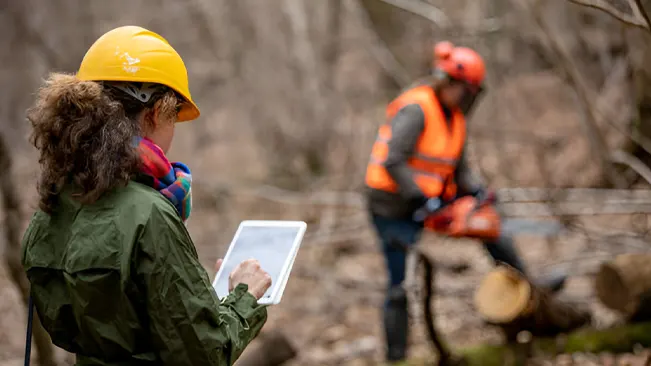
Arboriculture
Learn tree identification, pruning, health assessments, and safe climbing techniques. Arborists need a strong understanding of tree biology and proper care techniques to ensure tree health and safety.

Essential Soft Skills
Communication
Effectively convey information to colleagues, stakeholders, and the public. Clear communication is crucial for explaining complex concepts and gaining support for projects.
Problem-Solving
Tackle environmental challenges with innovative solutions. Being able to identify and address issues proactively is vital for success in these fields.
Leadership
Manage teams and projects successfully. Strong leadership skills help you motivate and guide others to achieve common goals.
Skill Enhancement
Engage in online courses, workshops, and certifications to continuously develop your skill set. Many organizations offer professional development opportunities that can help you stay current and competitive.
5. Networking and Professional Associations
Building Connections
Networking opens doors to job opportunities, mentorship, and professional growth. Building a strong network can provide support, advice, and collaboration opportunities throughout your career.
Key Organizations
Join the Society of American Foresters (SAF) and the Association of Consulting Foresters (ACF). These organizations offer resources, events, and networking opportunities for forestry professionals.

Connect with the International Society of Arboriculture (ISA) and the Tree Care Industry Association (TCIA). Membership provides access to educational materials, certification programs, and industry news.

Effective Networking
Attend industry conferences, join online forums, and participate in social media groups related to your field. Engaging with peers and industry leaders can lead to valuable connections and opportunities.
6. Job Search Strategies
Finding Opportunities
Use industry-specific job boards like SAF Career Center and ISA Job Board. These platforms list a variety of job openings tailored to forestry and arboriculture professionals.
Explore roles in government agencies, environmental NGOs, and private companies. Consider a wide range of employers to find the best fit for your skills and interests.
Crafting Your Application
Tailor your resume and cover letter to highlight your education, certifications, experience, and skills. Make sure to emphasize your relevant achievements and how they align with the job requirements.
Include keywords from the job description to ensure your application passes through applicant tracking systems.
Interview Preparation
- Research the organization and its mission. Understanding the company’s goals and values will help you articulate how you can contribute to their success.
- Be ready to discuss your experience and how you can contribute to the team. Prepare examples that demonstrate your skills and accomplishments.
- Practice answering common interview questions confidently. Rehearsing with a friend or mentor can help you refine your responses.
7. Advancing Your Career
To advance your forestry and arboriculture career, continuous learning is essential. Pursue advanced degrees or specialized certifications to enhance your qualifications, which can open doors to higher-level positions and specialized roles. Staying informed about industry trends, research, and technological advancements through regular reading of industry publications and attending conferences is also crucial.

Seeking opportunities for growth is another key aspect. Look for leadership roles in projects or teams to demonstrate your capabilities and dedication. Consider advancing within your organization or exploring new opportunities in the industry. Embrace roles that challenge you and help you grow.
Mentorship plays a vital role in career advancement. Seek advice from experienced professionals to navigate your forestry and arboriculture career path and gain valuable insights. Mentors can provide guidance, feedback, and support as you advance in your forestry and arboriculture career.
8. Overcoming Challenges
Potential Hurdles
Forestry careers can be physically demanding and often require working in remote locations. Be prepared for challenging field conditions and the physical demands of the job. Arboriculture involves safety risks associated with tree climbing and heavy equipment. Ensuring your safety and the safety of your team is paramount.
Strategies for Success
To achieve success in your forestry and arboriculture career, prioritize safety by following best practices and using proper gear. Safety training and certifications can help minimize risks.
Maintaining physical fitness is crucial to meet job demands; regular exercise and proper nutrition support your health and performance. Additionally, set career goals and celebrate milestones to stay motivated.
Tracking your progress and acknowledging your achievements can keep you focused and inspired, helping you maintain momentum in your forestry and arboriculture career journey.
Inspiring Success Stories
- Learn from professionals who have successfully navigated their careers in forestry and arboriculture. Hearing about others’ experiences can provide motivation and valuable lessons.
Conclusion
Starting a successful forestry and arboriculture career is a journey of dedication, education, and practical experience. By understanding these fields, gaining relevant qualifications, developing essential skills, and building a professional network, you can embark on a fulfilling career that makes a positive impact on our environment.
Begin your journey today by exploring educational programs, joining professional associations, and gaining hands-on experience in your forestry and arboriculture career.
Related Post:
Frequently Asked Questions (FAQs)
- What educational qualifications are required for a career in forestry?
A bachelor’s degree in Forestry, Environmental Science, or Natural Resource Management is typically required. Advanced roles may require a Master’s or Ph.D. - What certifications are important for arboriculture professionals?
The ISA Certified Arborist credential from the International Society of Arboriculture is highly regarded. - How can I gain practical experience in forestry and arboriculture?
Internships, apprenticeships, volunteer work, and participation in fieldwork and research projects provide valuable hands-on experience. - What key skills are needed for success in these fields?
Technical skills such as GIS and tree identification, along with soft skills like communication, problem-solving, and leadership, are essential. - What are the potential challenges in forestry careers?
Forestry careers can be physically demanding and often require working in remote locations with challenging field conditions. - How do I find job opportunities in forestry and arboriculture?
Utilize industry-specific job boards, explore roles with government agencies and environmental NGOs, and network with professionals in the field. - What role does continuous learning play in career advancement?
Continuous learning through advanced degrees, and certifications, and staying updated with industry trends is crucial for career growth. - How important is networking in these fields?
Networking is vital for job opportunities, mentorship, and professional growth. Joining professional associations and attending industry events can help build connections. - What are some strategies for staying motivated in these careers?
Setting career goals, celebrating milestones, and maintaining physical fitness can help you stay motivated and focused. - How can mentorship benefit my career in forestry or arboriculture?
Mentorship provides guidance, feedback, and support, helping you navigate your career path and make informed decisions.

Jordan Blake
Forestry AuthorJordan Blake is a forestry expert with over 15 years of experience in arboriculture and community education. Passionate about sustainable forest management, Jordan regularly writes for Forestry.com and Tree Care Magazine. Holding certifications in tree health assessments and urban forestry management, Jordan conducts workshops to educate the public on sustainable practices. Jordan has a degree in Environmental Science and enjoys hiking and photography in their free time.

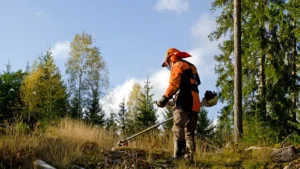

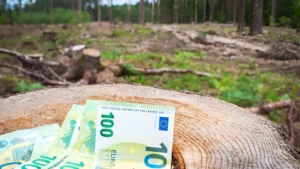


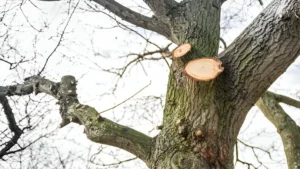


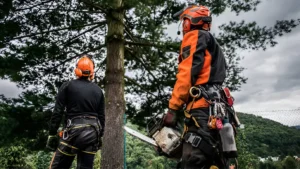

Leave your comment